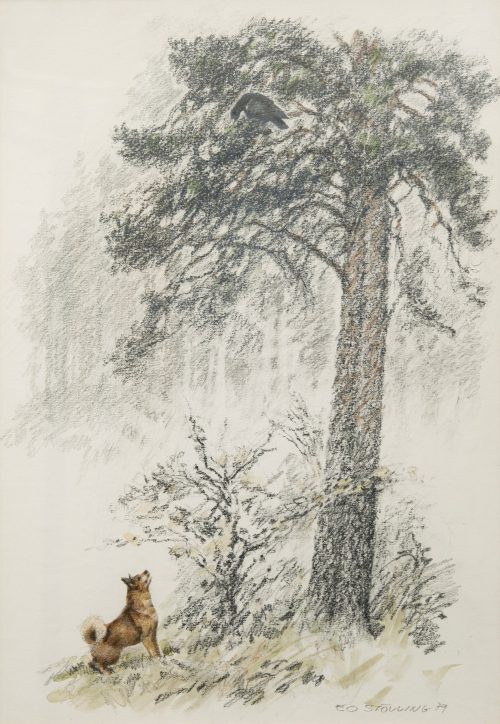
There are two types of Finnish folk songs: Rhymed folk songs and Kalevala-songs. They are distinguished by their use of rhyme and alliterations, as well as meter.
Finnish folk songs speak of love and sorrow, and long winter nights, but they also tell mythological stories.
Although Finland’s culture and music and been influenced by Russia, Germany and Sweden, many folk songs speak of the Finnish identity. That singularity is especially noticed in Finland’s older songs of nationalism, and some of them include mention of a dog.
We mention here that there are about 700,000 dogs in Finland (Statistics Finland) and pedigree dogs from 300 different breeds account for 80% of this number. One of them has been the national dog of Finland since 1979, and that breed is the Finnish Spitz. It is this breed that is mentioned in several of Finland’s patriotic songs.
There’s nothing like a song to capture what was going on culturally in a country, and in that regard, it is like a musical time capsule. A country’s music connects people to each other and to their roots, and it teaches us about its language (in listening to the song above, could you guess anything about Finnish’s linguistic roots?)*** It is telling, then, when a breed is included in the lyrics of songs of pride.
The Finnish Spitz is an established part of the Finnish life. Many Finns remember the breed from their childhood ABC books, as well as from illustrations in Finland’s national epic poem, Kalevala, and in the novel, Seven Brothers, written by Finland’s national author, Aleksis Kivi. Postcards illustrate the Finnish Spitz as a part of its family’s daily life, movies like Koirankynnen Leikkaaja (Dog Nail Clipper) include the breed, and yes, music, too, mentions it.
As was touched upon earlier, the Finnish Spitz was declared Finland’s national dog breed at the Finnish Kennel Club’s 90th anniversary show. Dressed in an old hunting outfit, the then chair of the Finnish Spitz Club, Erkki Uutela, presented a Finnish Spitz for the audience.
***Finnish is not a slavic language, it is a Finno-Ugric one. In this language tree, the three most-spoken Uralic languages are Finnish, Hungarian, and Estonian.
Image: “A Finnish Spitz barking at a bird” in watercolor and pencil by Erik Oskar Stövling (1913–1991). The Finnish Kennel Club received this painting as a gift for its 90th birthday in 1979.
